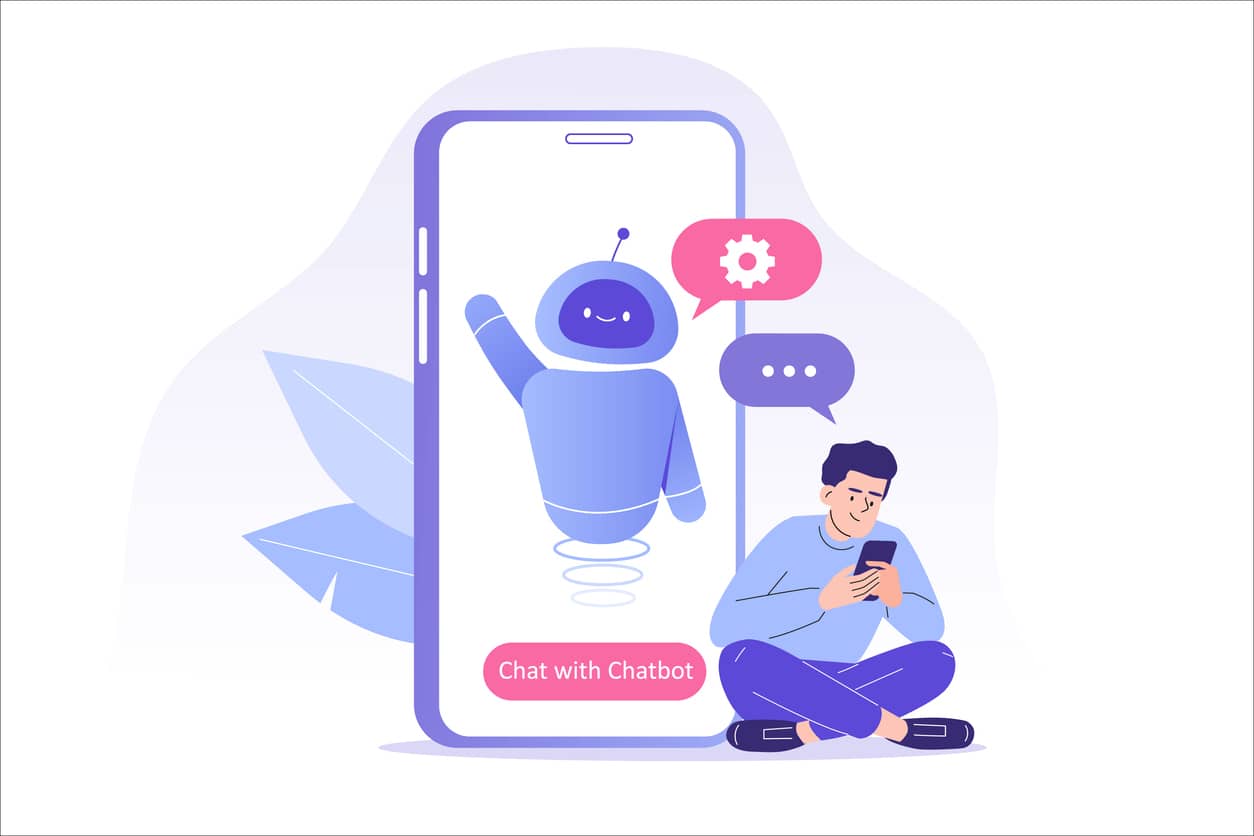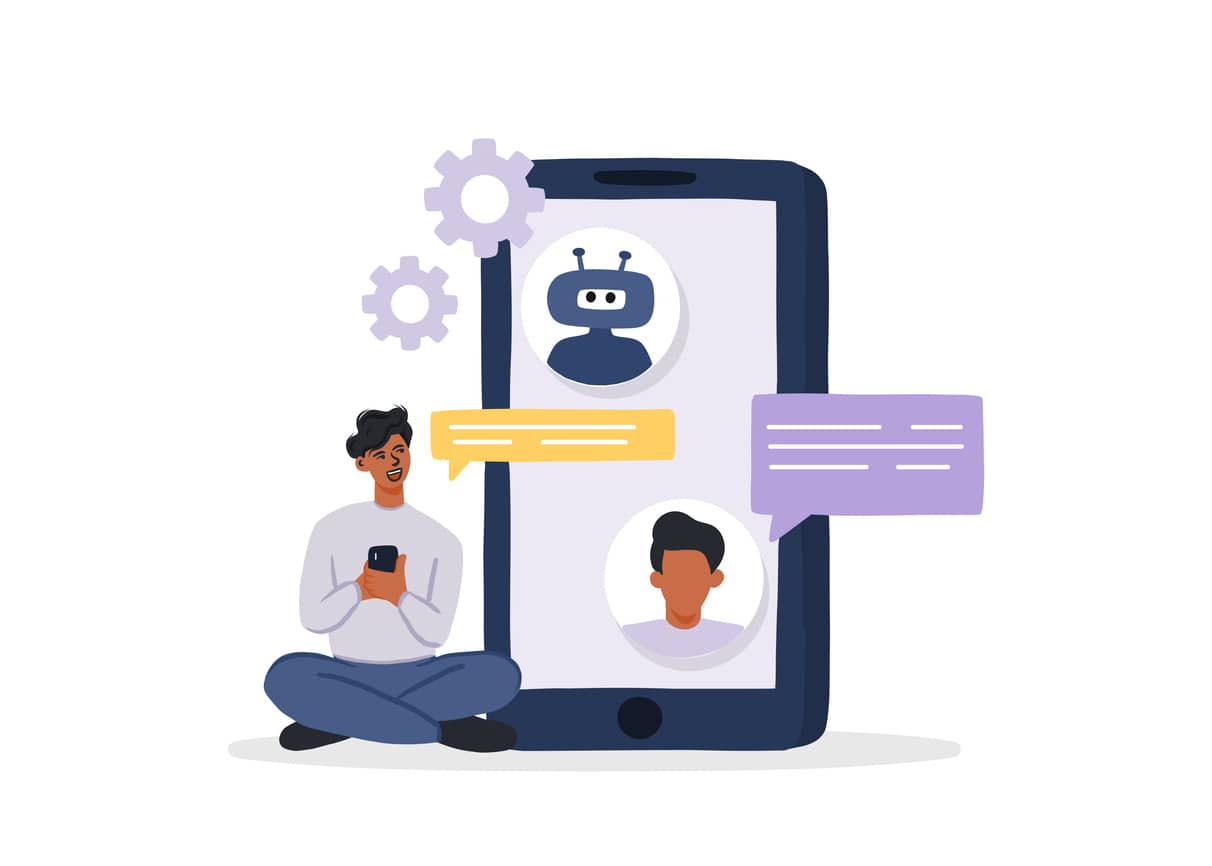Understanding the basics of chatbot training
Before delving into the intricacies of training your chatbot on custom data, it’s essential to grasp the fundamentals of chatbot training. Training a chatbot at its core involves exposing it to large volumes of relevant data and using machine learning algorithms to understand and respond to user queries effectively.
When we talk about training a chatbot, we teach it to converse with users naturally and meaningfully. This process is akin to how humans learn languages—by exposure to conversations, texts, and interactions.
Imagine your chatbot as a language learner. Just as you might immerse yourself in a new language by listening to native speakers and practicing conversation, a chatbot learns by analyzing vast amounts of text-based data. This data could include transcripts of previous interactions, customer service tickets, product descriptions, and more.
The key is to expose the chatbot to a diverse range of language patterns and scenarios so it can learn to understand the nuances of human communication. Through this exposure, the chatbot begins to recognize patterns, associations, and common phrases that it can then use to generate responses to user queries.
But it’s not enough to feed the chatbot data—it also needs to learn how to make sense of it. That’s where machine learning algorithms come into play. These algorithms analyze the data, identifying patterns and relationships between words and phrases. Over time, as the chatbot analyzes more data, its language understanding becomes more refined and sophisticated.
The ultimate goal of chatbot training is to enable the chatbot to understand user queries and respond in a relevant and helpful way. By exposing the chatbot to large volumes of relevant data and using machine learning algorithms to analyze and understand that data, we empower the chatbot to engage in meaningful conversations with users and provide valuable assistance.
Collecting and preparing chatbot data
Before your chatbot learns and understands user queries, it needs the correct data to train on. This phase involves gathering and preparing the necessary data to lay a solid foundation for your chatbot’s intelligence.
Data collection
The first step is to collect the data your chatbot will learn from. This can include various sources such as transcripts of past customer interactions, frequently asked questions, product information, and any other relevant text-based content. The goal is to compile a diverse set of data that covers the range of topics and queries your chatbot will encounter.
Data preparation
Once you have gathered the data, the next step is to prepare it for training. This involves several tasks:
Cleaning the data: Remove any inconsistencies, errors, or irrelevant information from the dataset. This ensures that the data your chatbot learns from is accurate and reliable.
Organizing the data: Structure the data so that it is easy for the chatbot to understand and learn from. This may involve categorizing the data into different topics or organizing it into a standardized format.
Ensuring data representation: It’s crucial to ensure that the data is representative of the types of queries your chatbot will encounter in real-world scenarios. This means including various examples and covering different use cases to provide comprehensive training.
You create a solid foundation for your chatbot’s training by meticulously collecting and preparing the data. Clean, organized, and representative data sets the stage for effective learning, enabling your chatbot to develop accurate and relevant responses to user queries.
Choosing a chatbot development platform
Once you have gathered and prepared your chatbot data, the next crucial step is selecting the right platform for developing and training your chatbot. This decision will significantly impact the ease of development, your chatbot’s capabilities, and your project’s scalability.
Evaluation of development platforms
Begin by evaluating different chatbot development platforms available in the market. Platforms like ChatGPT are popular due to their comprehensive tools and resources tailored specifically for building and training chatbots. Consider factors like ease of use, available features, compatibility with your data and requirements, and scalability options.
Features and tools
Look for platforms offering various features and tools to streamline development. For example, ChatGPT from OpenAI supports various programming languages, such as Python, allowing flexibility and customization. Additionally, features like pre-trained models, natural language processing capabilities, and integration options can significantly enhance your chatbot’s functionality.
Data import and training environment setup
One critical factor to consider is the ease of importing your prepared data into the platform and setting up the training environment. Platforms like ChatGPT typically offer straightforward processes for importing data, whether in text format or structured data. Setting up the training environment should also be intuitive and user-friendly, allowing you to focus on customizing your chatbot’s responses rather than dealing with technical complexities.
Integration and scalability
Ensure the chosen platform supports seamless integration with your existing systems and channels. Whether you plan to deploy your chatbot on your website, mobile app, or intranet, compatibility and integration capabilities are essential. Additionally, consider the platform’s scalability to accommodate future growth and expansion of your chatbot project.
By carefully evaluating and selecting the right chatbot development platform, you set yourself up for success in building and training your chatbot. Platforms like ChatGPT offer robust features, tools, and support to streamline the development process and empower you to create highly functional and practical chatbots tailored to your needs.

Forming the chatbot model
After gathering and preparing your data and setting up the training environment, the next critical step is to form the chatbot model. This stage involves crafting the underlying structure and algorithms to enable your chatbot to understand user queries and generate appropriate responses.
Algorithm selection
Select the appropriate machine learning algorithms to power your chatbot’s intelligence. Consider factors such as the complexity of your data, the type of interactions your chatbot will handle, and your application’s performance requirements. Commonly used algorithms for chatbot development include neural networks, decision trees, and support vector machines.
Parameter tuning
Once you’ve chosen the algorithms, the next step is fine-tuning the model parameters to optimize performance. This involves adjusting parameters such as learning rate, batch size, and network architecture to achieve the desired level of accuracy and responsiveness. Experimentation and iteration are essential during this stage as you refine the model based on feedback and performance metrics.
Training and evaluation
With the model architecture and parameters in place, it’s time to train the chatbot using your custom data. This involves feeding the data into the model and iteratively adjusting the model weights based on observed outcomes. The model learns from the data, generating accurate and contextually relevant responses.
It’s essential to continuously evaluate the model’s performance throughout the training process. This can be done by testing the chatbot’s responses against a separate validation dataset or conducting real-world simulations. By monitoring performance metrics such as accuracy, precision, and recall, you can identify areas for improvement and refine the model further.
By meticulously forming the chatbot model through algorithm selection, parameter tuning, and training, you lay the groundwork for a highly capable and effective chatbot. This iterative experimentation, evaluation, and refinement process ensures your chatbot learns to generate accurate responses that meet your users’ needs.

Testing, fine-tuning
Once you’ve developed the initial model for your chatbot, it’s crucial to subject it to thorough testing to identify any weaknesses or areas for improvement. This stage is pivotal in ensuring your chatbot performs effectively and provides users with accurate and satisfactory responses.
Thorough testing
Thorough testing involves simulating real-world interactions to evaluate the chatbot’s responses across various scenarios. This can include testing the chatbot’s ability to understand different types of queries, handle variations in language and syntax, and provide relevant and helpful responses. By subjecting the chatbot to diverse testing scenarios, you can uncover any potential issues or limitations in its performance.
Identification of weaknesses
During the testing phase, it’s essential to carefully analyze the chatbot’s responses to identify any weaknesses or areas for improvement. This may involve examining instances where the chatbot fails to understand user queries, provides inaccurate or irrelevant responses, or struggles to maintain conversation coherence. By pinpointing these weaknesses, you can gain insights into areas where the chatbot’s performance can be enhanced.
Fine-tuning the model
Based on the insights gathered from testing, you can fine-tune the chatbot model accordingly. This may involve adjusting parameters, refining algorithms, or incorporating additional training data to address identified weaknesses and improve performance. The goal is to iteratively refine the model to enhance its accuracy, responsiveness, and effectiveness in generating contextually relevant responses.
Iterative process of testing and refinement
Testing and refinement is an iterative process that continues over time. As the chatbot interacts with users and encounters new scenarios, monitoring its performance and making ongoing adjustments is essential to ensure optimal functionality. By continuously testing, identifying weaknesses, and fine-tuning the model, you can enhance the accuracy and effectiveness of your chatbot over time, ultimately providing users with a more satisfying and engaging experience.

Deployment
After thoroughly testing and fine-tuning your chatbot, the next step is to deploy it to your desired platform or channels. This stage marks the transition from development to real-world implementation, where your chatbot becomes accessible to users and begins to fulfill its intended purpose.
Platform integration
Deploying your chatbot involves integrating it into your chosen platform or channels, whether a website, mobile app, or intranet. This integration should be seamless and user-friendly, ensuring users can easily access and interact with the chatbot without encountering technical barriers.
Seamless user experience
Ensuring a seamless user experience is paramount during the deployment process. Your chatbot should be designed to provide users with a smooth and intuitive interaction, guiding them through conversations and delivering relevant and helpful responses. To optimize the user experience, consider user interface design, response times, and conversational flow.
Monitoring and feedback
Once deployed, monitoring user interactions and gathering feedback to assess the chatbot’s performance in real-world scenarios is essential. This ongoing monitoring allows you to identify any issues or areas for improvement and make necessary adjustments to enhance the chatbot’s capabilities. Pay attention to user feedback, analyze usage metrics, and conduct periodic evaluations to ensure your chatbot remains relevant and practical.
Continuous refinement
Deployment is not the end of the development process but rather the beginning of a continuous cycle of refinement and improvement. By monitoring user interactions and feedback post-deployment, you can gather valuable insights into user preferences, pain points, and usage patterns. Use this feedback to refine your chatbot’s capabilities, add new features, and adapt to changing user needs, ensuring it remains a valuable asset to your organization.
Conclusion
Training your chatbot on your own data is a critical step in ensuring its accuracy, relevance, and effectiveness. By following these steps and leveraging the right tools and platforms, you can develop a chatbot that seamlessly integrates into your workflow and provides valuable assistance to your users.
As you embark on your chatbot development and deployment journey, remember the significance of selecting the best AI chatbot app suited to your needs. Additionally, understanding methods such as how to check if something was written by a chatbot and how to make a chatbot undetectable can enhance the authenticity and reliability of your chatbot interactions. Delve deeper into the mechanisms behind where chatbots source their information and explore the diverse applications they serve. By embracing these insights and resources, you can craft a chatbot experience that meets and exceeds user expectations, ultimately driving value and engagement across various platforms and channels.




